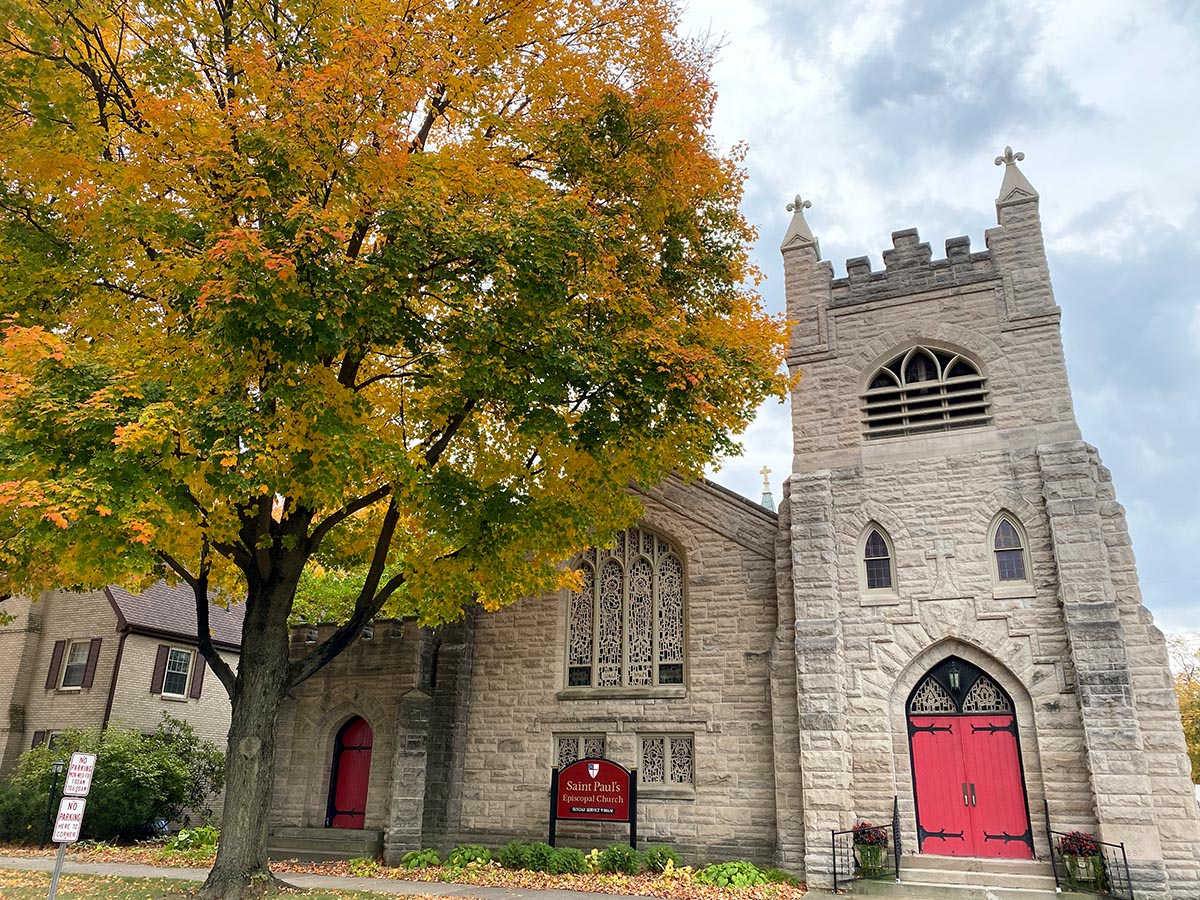
St. Paul’s will use a challenge grant from the Church Buildings for Collaborative Partnerships program to restore the belltower of its historic Gothic Revival building in LaPorte.
The Rev. Canon Michelle I Walker
How does a congregation’s buildings and property best serve its mission and allow it to thrive? How do new community partnerships help a congregation to further its mission? Partners realized long ago that these questions are being asked by clergy, laypeople, and denominational leaders across the nation. Beginning in 2018, Partners took part in conversations around these questions with Bishop Jennifer Baskerville-Burrows of the Episcopal Diocese of Indianapolis and colleagues from statewide preservation nonprofit Indiana Landmarks. Together they developed an approach that would help a group of congregations work together and learn fresh ways to align their missions with the assets of their buildings.

Visitors explore the Modernist sanctuary at St. Timothy’s Episcopal Church in Indianapolis Indiana as part of the Church Buildings for Collaborative Partnerships program, which is currently serving over 80 Episcopal parishes across the state of Indiana.
Karen DiLossi
After the partnering organizations got to work planning the details, Church Buildings for Collaborative Partnerships (CBCP) was born. The proposed program was supported by Lilly Endowment Inc.’s Thriving Congregations Initiative, and early on, as the initiative took shape, Bishop Baskerville-Burrows and her colleague in ministry, The Rt. Rev. Douglas Sparks, Bishop of the Diocese of Northern Indiana, recognized that their aspirations for deeper collaboration between their dioceses could be powerfully realized by joining efforts. With both dioceses engaged, the program’s scope was significant, serving over 80 Episcopal parishes across the state.
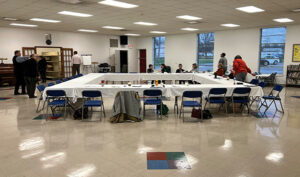
A large table in Crain Hall, one of the spaces used for community gatherings at St. Timothy’s in Indianapolis.
Karen DiLossi
Linda Buskirk, an experienced Fort Wayne-based church consultant who became the project director, said of the program, “[It] helps faith communities see what they offer their neighbors through a lens of strength and opportunity, rather than through a tired view of regret over changed reality. It helps church leaders see potential rather than problems, and teaches them to promote their parish in that positive light. It helps us see ourselves in the same way God sees us: gifted, strong, a clean slate.”
CBCP participants’ journey includes training, facilitated work on site, and engagement with local community leaders, all assisted by small capital grants. The goal is for each parish to be more engaged with its community, to be empowered by a refreshed take on its own mission, and to formulate a meaningful strategy to fully activate its buildings and assets through service. A small team of clergy and lay leaders from the congregations benefit from Partners’ guidance throughout, from taking a new look at their missions and buildings to ensuring new partnerships and ministries take root.
At the strikingly-designed mid-century St. Timothy’s in Indianapolis, lay leader Rose Anne Grasty explained how the training offered in the programming, uniquely customized by CBCP, helped to open their eyes about opening their doors: “Most of us are learning that the space that we have is not ‘Sunday space’ —– it is space for the use of God’s children. That may mean something entirely different than what is has meant in the past. Especially [for] us lifetime Episcopalians [who] have to see things very differently and open ourselves up to the world around us. We can provide our space for new uses. We just need to open up!”
With the program now in its second year and serving its third cohort of parishes, projects to restore and invest in congregational buildings and support new ministries are flourishing statewide.
Situated between Gary and South Bend is the small city of LaPorte, which shares with its famed neighbors a legacy of industry and historic buildings engendered over a century ago. While those proud memories have accrued a gritty patina over time, St. Paul’s dedicated members have remained a committed force for ministry within their stone landmark. The CBCP site visit – like all project visits – included an hour or two of “community engagement” with neighbors and civic leaders, to discover and discuss the strengths and assets of the church building. St. Paul’s brought together the city’s mayor and other local leaders for an energetic conversation that led to new space-sharing partnerships in a matter of weeks.

Through conversation with community leaders, St. Alban’s in Indianapolis determined that their former education wing could best be used for a new community workplace initiative.
Joshua Castaño
Knowing that the needs of its historic Gothic Revival building were pressing, the parish applied for matching funds to restore the tower. The parish’s priest, ‘The Rev. Canon Michelle Walker, said, “We [realized we] cannot fully utilize our assets if we are not good stewards of them. The goal is to preserve St. Paul’s bell tower as a reference point for people looking to find St. Paul’s and to communicate that St. Paul’s is a welcoming, well-maintained, and easily identified location for worship, ministry, and service.” Though initially somewhat daunted by the challenge of matching the grant funds, parish leaders found the renewed energy and promising partnerships they developed generated donations and gifts that met their match ahead of time.
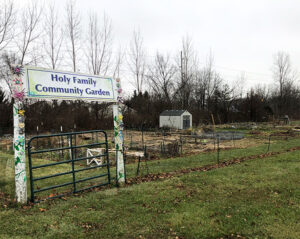
Holy Family in Fishers took a fresh look at what was possible for their building and grounds, including their Community Garden, and entered into a new agreement with a community children’s literacy program.
Sarah Jones
St. Alban’s in Indianapolis, a small but passionate congregation led by the Rev. Debbie Dehler, has built on many years of community service. They have known Partners and Indiana Landmarks in previous years through Sacred Places Indiana, and impressed staff with their creative, grassroots approach to serving their largely African American neighborhood. St. Alban’s broad post-war building is flanked by ample property that’s warmly appreciated by local neighbors for its famed baseball diamond and community Peace Garden. After a successful conversation with a range of community leaders from the mayor’s office to local nonprofit leaders, the parish decided to tie together much of its ministry through a new community workplace initiative. The program offers working space to individuals and organizations within the community to foster entrepreneurship and economic opportunity. Sharing space in this new way allows the parish to connect with its justice-focused mission while maximizing the value of its space and generating much-needed revenue to care for its ageing building.
The Rev. Bruce W. Gray, Rector of Holy Family in Fishers acknowledged that “CBCP helped us look with fresh vision [at] what was possible for our buildings and grounds, particularly on weekdays. Consequently, we now are hosting a community tutoring program and have just entered into an agreement with a children’s literacy program for the public.” These new uses also leverage much of Holy Family’s outdoor space, another key asset that parishes throughout the program are exploring in new ways. In addition to rethinking primary buildings and outdoors space, some parishes are taking a new approach to other properties, such as former housing that could serve other needs.
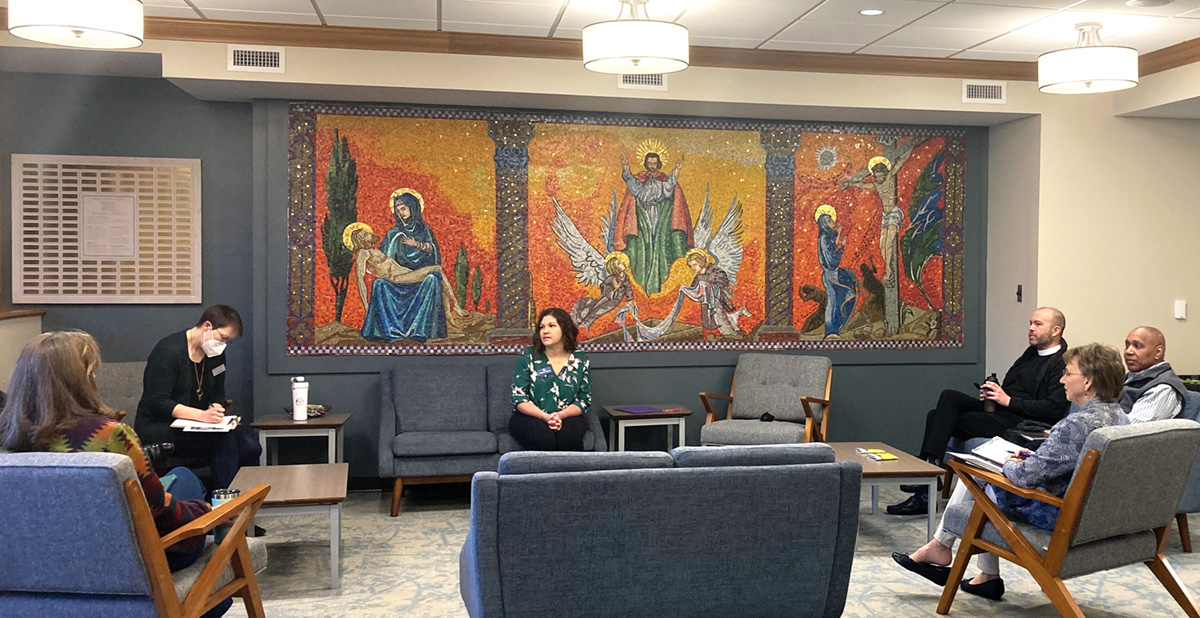
Trinity Ft. Wayne contains a wealth of both community spaces and art, including this sitting area decorated with a mosaic.
Sarah Jones
On the other end of the state, St. John’s in historic Mt. Vernon, on the Ohio River, was focused on helping children in need. CBCP helped them refine their vision to turn the long-burdensome house they owned next to their Carpenter Gothic church into secure temporary housing for children who have been removed from violent or abusive homes. With a small grant through CBCP they were able to install appropriate fencing and security to protect children’s privacy and meet the standards necessary for this new and important ministry.
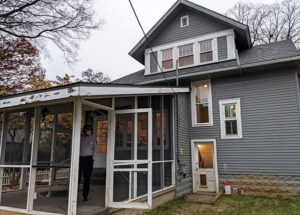
The congregation at St. John’s in Mt. Vernon is working to convert a house next to their church into temporary housing for children.
Emily Sajdak
CBCP is helping Indiana parishes learn how collaboration and partnership may be the key to successful ministry. As Amber Bauer, a member of Trinity, Fort Wayne said, “We learned that we need to be able to tell our story, and we as a congregation need to take the initiative to do that work. The community isn’t coming to us unless one of our members makes that happen. We need to take the initiative to find out what gaps exist in the community so we can learn where we can help.” In wholeheartedly engaging with their neighbors, these Indiana parishes are seeing their buildings become the heart of their communities.
